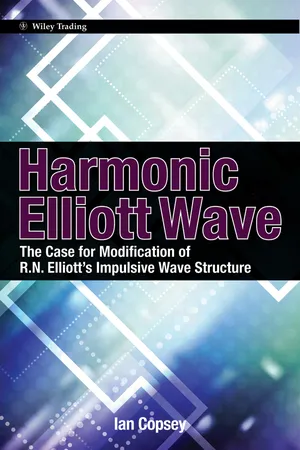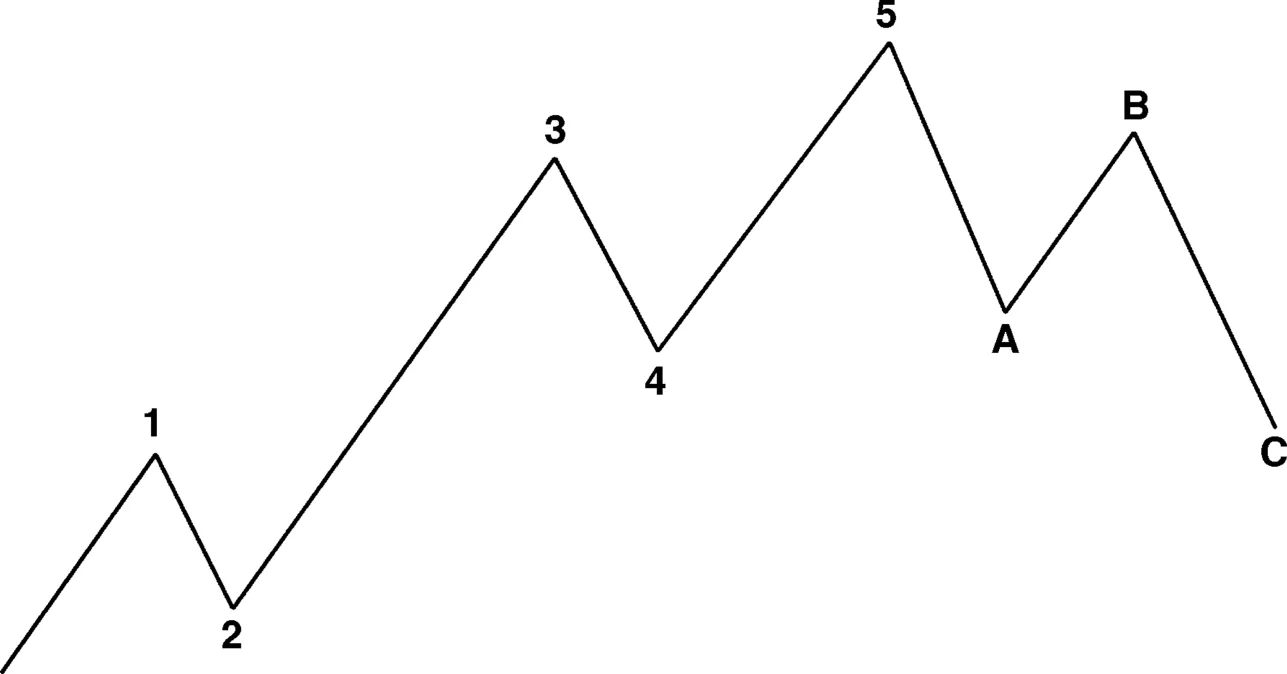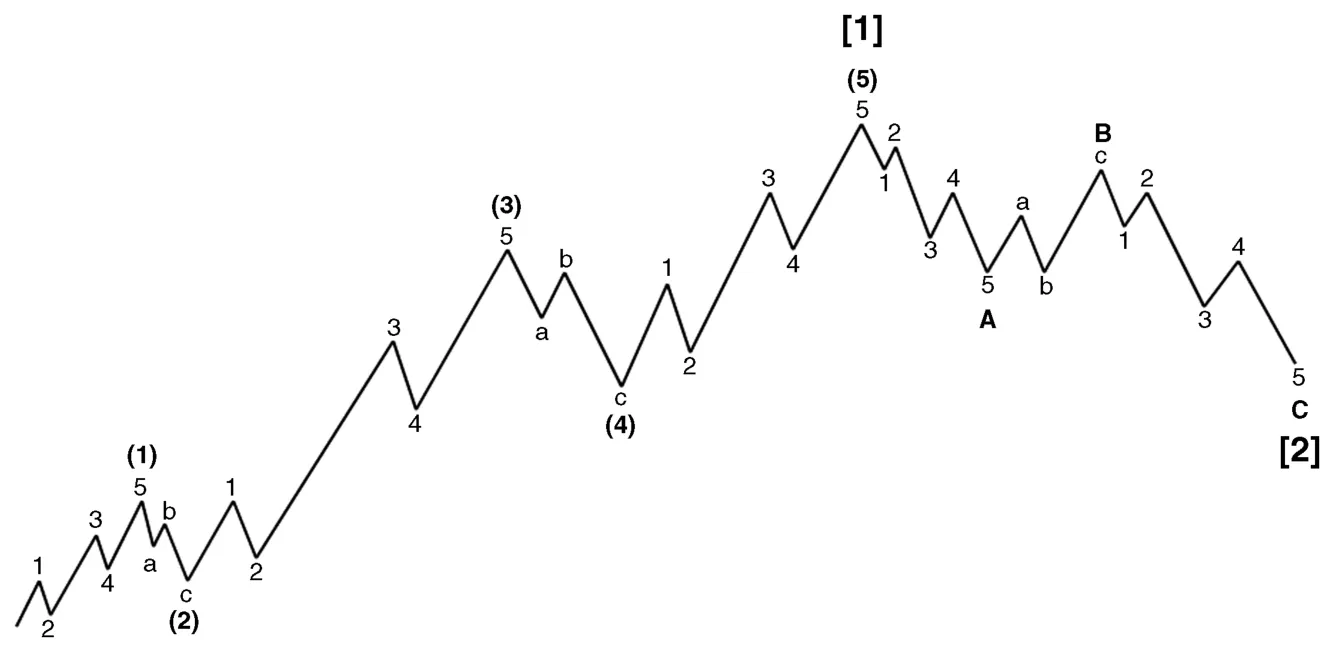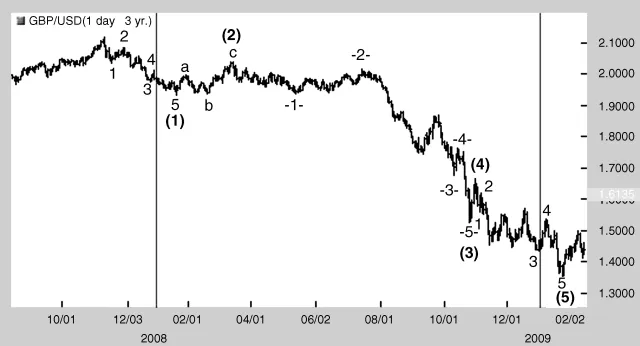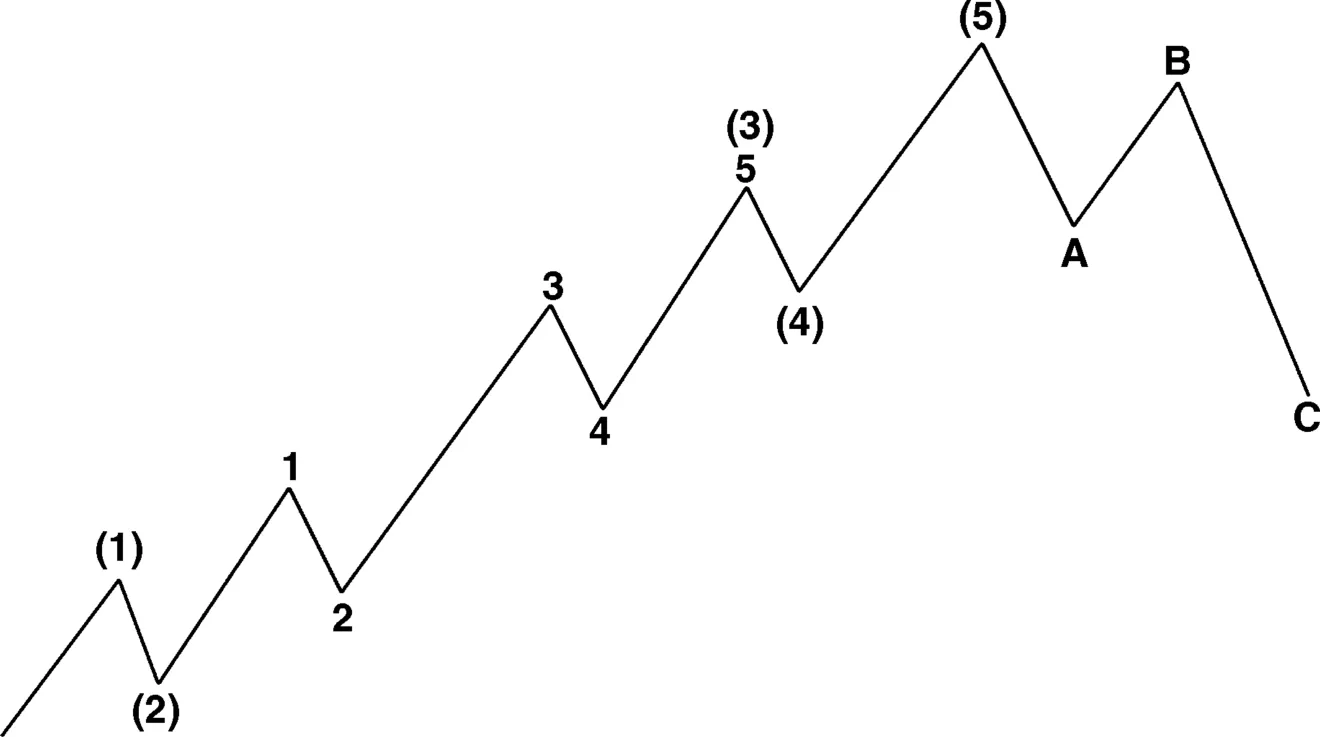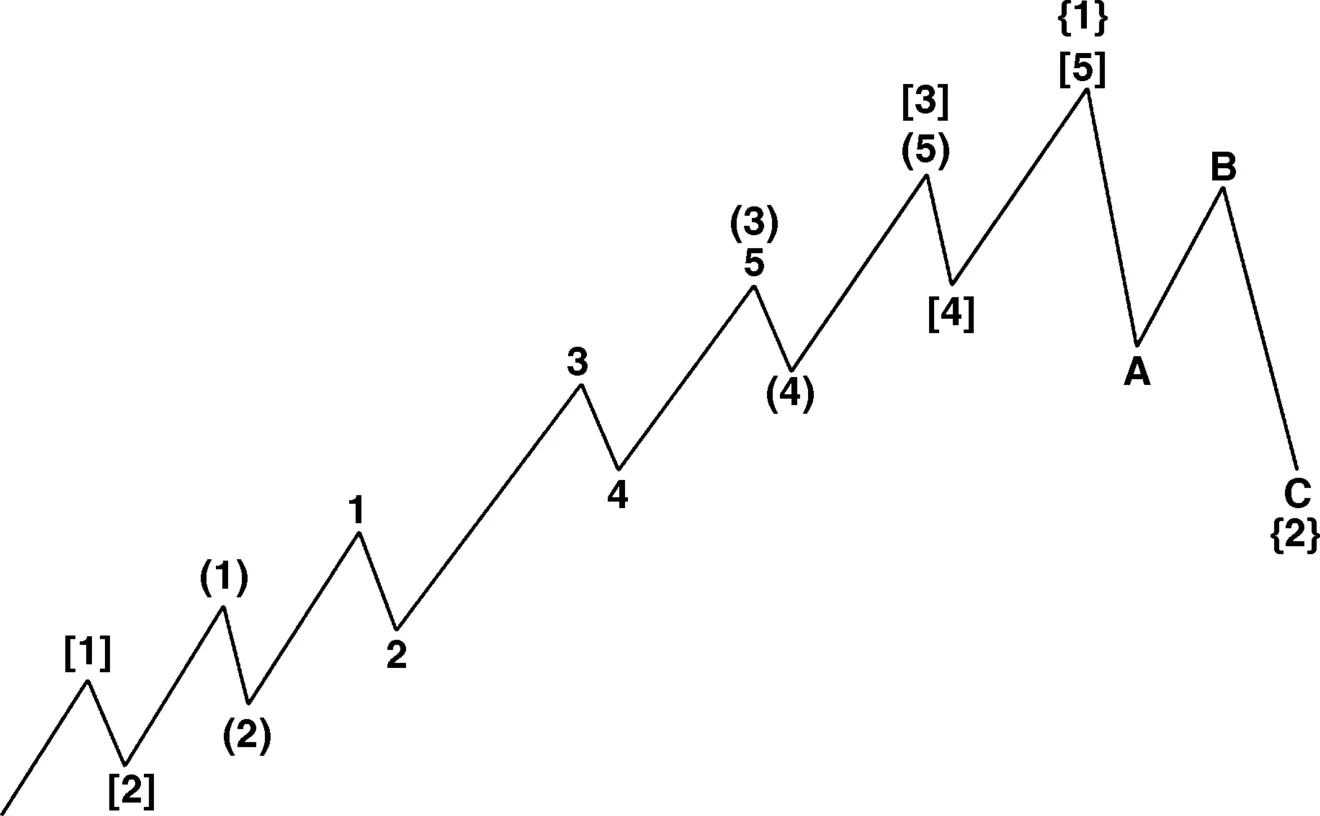![]()
Chapter 1
R. N. Elliott's Findings: Impulsive Waves
Ralph Nelson Elliott
Ralph Nelson Elliott was a distinguished businessman, an accountant whose career began at the age of 25 in 1896. He was a renowned organizer, fastidious in his approach, and over the following 25 years he rescued a number of distressed companies and brought them back into profitability. In 1924 he was appointed by the U.S. State Department as chief accountant for Nicaragua—then under the control of the United States—to reorganize the finances of the entire country.
However, in 1929 he became seriously ill with pernicious anemia, which kept him confined to his bed. It was at this time, while recuperating, that he studied stock market charts, examining price behavior across all time frames. It took over five years for him to draw his conclusions. In March 1935, as the Dow Jones Average closed almost at its lows, he published his findings by declaring that the index was making its final bottom. The accuracy of his findings was impressive, and they were published in his first book The Wave Principle. He followed up in the early 1940s with an addendum on the application of the Fibonacci sequence of ratios to his findings on the structure of wave development.
This became known as the Elliott Wave Principle, and it is applied by what may be millions of traders around the world in today's markets. Before offering my modifications to this principle, I will present Elliott's findings and observations, which still remain the basis of what I consider the most accurate tool in forecasting markets.
The Wave Principle can be loosely separated into two basic market characteristic types: trends and consolidation (or correction). Elliott named the trending phase impulsive while the rest were classed as corrective. I shall reproduce these in full in order that the original theory is provided, as it still forms the basis of what is a brilliant example of observation and collation into a methodical tool that can be applied even to modern markets.
Those readers who are familiar with the principle may wish to move on to Chapter 3.
The Impulsive Wave Structure
Elliott proposed that when price movements demonstrate an underlying trend, they will always develop in five distinct waves: three in the direction of the trend and two as corrections to the underlying trend (as shown in Figure 1.1). The three directional waves are labeled Waves 1, 3, and 5, and the corrective waves as Waves 2 and 4. The directional waves in a trend are normally referred to as impulsive waves. Once this five-wave sequence has been completed, a correction will be formed. While a fuller description of corrective waves will follow, for now I shall simply say that they develop in three waves and refer to these as Waves A, B, and C.
Figure 1.2 shows how a five-wave move would appear on a chart, the example being the hourly EURUSD chart.
Elliott's findings, which were observed over multiple time frames (daily, weekly, and monthly), were that waves are fractal. This meant that the basis of all movements, whether in five-minute charts or monthly, are intrinsically related as the shorter time frames form the building blocks for the larger time frames. This can be observed in the complex wave structure shown in Figure 1.3.
Thus, a simple five-wave move at the beginning of a new sequence will form a Wave (1) and the three-wave correction will then become Wave (2), followed by Wave (3), Wave (4), and Wave (5). Indeed, this larger five-wave move will form Wave [1] of the next higher degree, followed by a Wave [2].
Note: In a simple corrective move, Wave A and Wave C will consist of five waves due to the fact they are counter-trending moves. Wave B will always consist of three waves, or—as we will find later—a combination of three-wave moves.
Already it becomes apparent that where you see a five-wave directional move—with the exception of Wave 5—it will always be followed by another five waves.
Figure 1.4 shows how a complex five-wave decline would appear on a chart, the example being the daily GBPUSD chart.
Extended Impulsive Waves
Elliott also noted that impulsive waves had an occasional tendency to extend; he observed that there was more than a single set of impulsive waves in a trend (see Figure 1.5).
This is a simple concept, noting that the five waves constructing Wave (3) are made up of five waves of the same degree. This can perhaps be best described as saying that if this is a daily chart, then the five waves in Wave (3) are also visible and measurable in the daily chart rather than, say, the hourly chart. Of course, the impulsive waves 1, 3, and 5 will be composed of five waves themselves.
In addition to this, Elliott found that there were cases of multiple extensions (as shown in Figure 1.6).
Extended waves may occur in any of the three impulsive waves, but most commonly in a third-wave position which Elliott observed was generally the wave with the strongest risk of a powerful trending extension. Considering the often seen reversal which tends to begin with the market believing that another correction is developing—thus adding to positions in favor of the prior trend—it makes sense that the third wave is more often than not the stronger move as it begins with positions being unwound and fresh positions in the o...
